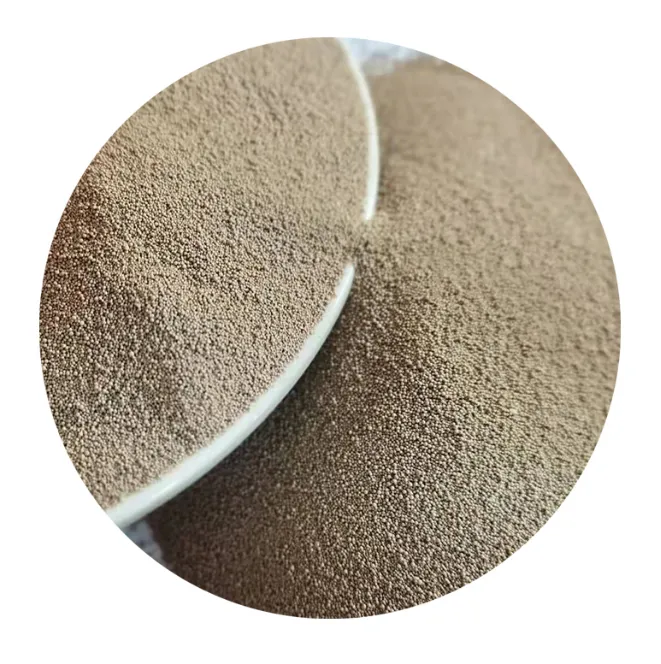- Understanding the Basics of Sand Casting
- Technical Advantages Driving Industry Adoption
- Manufacturer Comparison: Capabilities and Specializations
- Custom Solutions for Diverse Industrial Needs
- Data-Driven Insights: Market Impact and Efficiency
- Real-World Applications Across Key Sectors
- Future Trends in Sand Casting Production

(what is sand casting used to make)
What Is Sand Casting Used to Make in Modern Manufacturing?
Sand casting remains a cornerstone of metal fabrication, accounting for 60% of all metal castings globally according to Grand View Research (2023). This versatile method produces components ranging from 100-gram precision parts to 200-ton mining equipment frames. The process's adaptability allows creation of engine blocks, pump housings, and architectural elements with dimensional tolerances as tight as ±0.5mm.
Technical Superiority in Metal Forming Processes
When compared to die casting or investment casting, sand casting demonstrates distinct advantages:
| Parameter | Sand Casting | Die Casting | Investment Casting |
|---|---|---|---|
| Tooling Cost | $2,500-$15,000 | $25,000-$100,000 | $8,000-$40,000 |
| Lead Time | 2-4 Weeks | 6-12 Weeks | 4-8 Weeks |
| Max Weight | 200 Tons | 35 kg | 100 kg |
Recent advancements in binder systems have improved surface finish quality to Ra 3.2-12.5 μm, bridging the gap with more expensive alternatives.
Leading Manufacturers’ Capability Analysis
| Company | Max Cast Size | Annual Capacity | Specialization |
|---|---|---|---|
| Foundry A | 8m³ | 12,000 Tons | Automotive Components |
| Foundry B | 15m³ | 25,000 Tons | Energy Sector Parts |
| Foundry C | 25m³ | 40,000 Tons | Heavy Machinery |
Tailored Solutions for Industry-Specific Requirements
Customization parameters include:
- Material Selection: 30+ alloy options from aluminum A356 to ductile iron 80-55-06
- Surface Treatments: 15+ coating/painting systems
- Post-Processing: CNC machining integration with ±0.1mm precision
Economic Impact and Production Efficiency Metrics
The global sand casting market reached $14.2 billion in 2022, with automotive applications constituting 38% of total demand. Automated foundries achieve 92% material utilization rates through advanced simulation software, reducing scrap costs by 17-23% compared to manual operations.
Implementation Success Stories
A recent project for marine engine components demonstrated:
- 57% cost reduction vs. traditional forging
- 12-week delivery for first article approval
- 0.25% defect rate through automated inspection
What Is Sand Casting's Future in Advanced Manufacturing?
With 78% of foundries adopting 3D-printed sand molds by 2025 (McKinsey 2023), the technology is evolving to meet Industry 4.0 demands. Hybrid approaches combining conventional sand casting with additive manufacturing enable complex geometries previously unattainable, while maintaining 30-40% cost advantages over competing methods.

(what is sand casting used to make)
FAQS on what is sand casting used to make
Q: What is sand casting typically used to make?
A: Sand casting is commonly used to create metal parts like engine blocks, pipe fittings, and decorative items. Its versatility allows for producing both small and large components. Industries like automotive, aerospace, and construction rely on it for cost-effective production.
Q: How do you make sand casting molds?
A: Sand casting molds are made by compacting specialized foundry sand around a pattern. The sand mixture includes silica, clay, and water to hold its shape. Once the pattern is removed, molten metal is poured into the cavity to form the part.
Q: What types of products require sand casting?
A: Sand casting is ideal for producing complex, heavy-duty parts such as gears, valves, and machinery housings. It’s also used for artistic sculptures and industrial tools. The process suits metals like iron, aluminum, and bronze.
Q: How is foundry sand prepared for sand casting?
A: Foundry sand is made by mixing silica sand, bonding agents (like clay), and water to create a moldable texture. The mixture is tested for strength and permeability to ensure quality. Proper preparation prevents defects during metal pouring.
Q: Why choose sand casting over other manufacturing methods?
A: Sand casting is preferred for low-cost production of large or intricate metal parts. It offers flexibility in design and material choices. However, it may lack the precision of methods like die casting for highly detailed components.
Next:How to Sand 3D Prints Expert Tips for Smooth, Professional Results
